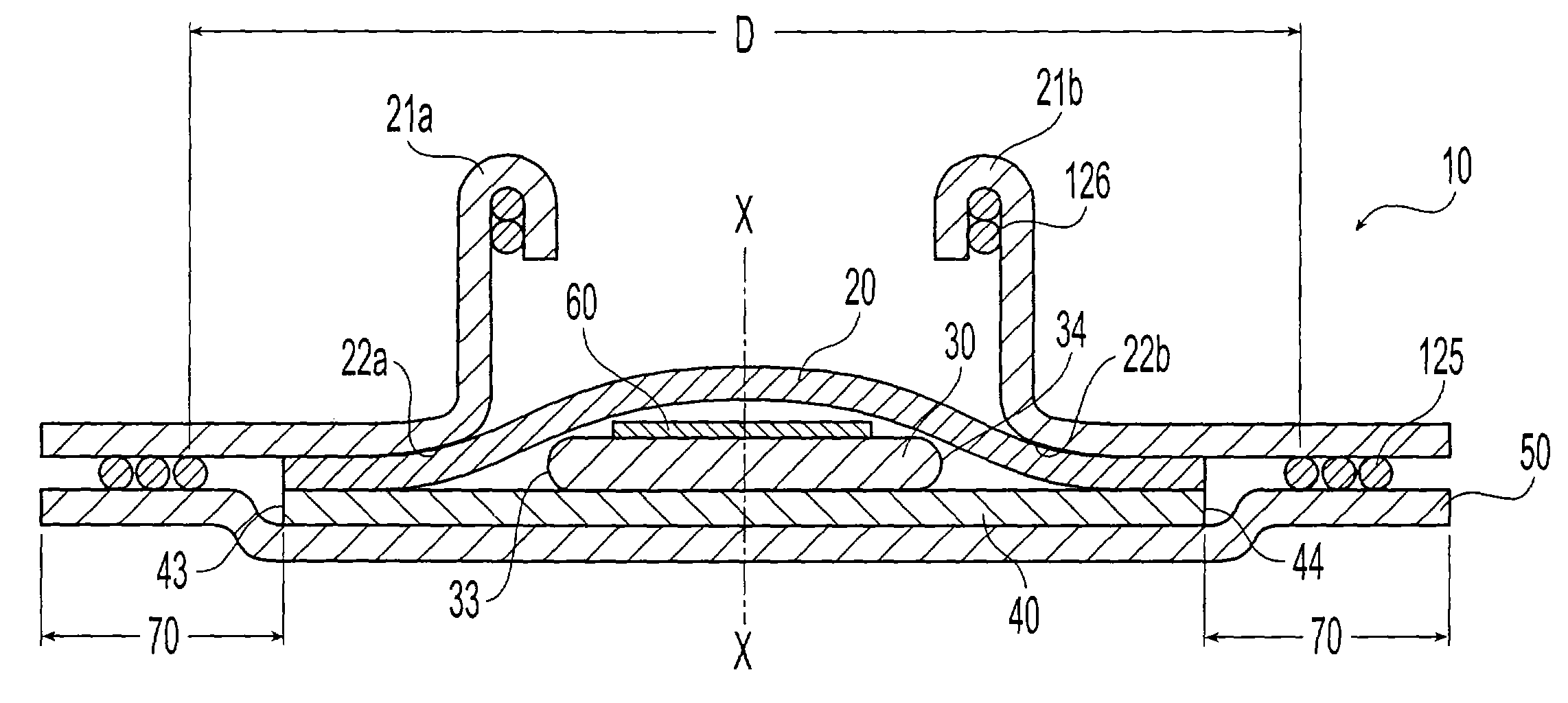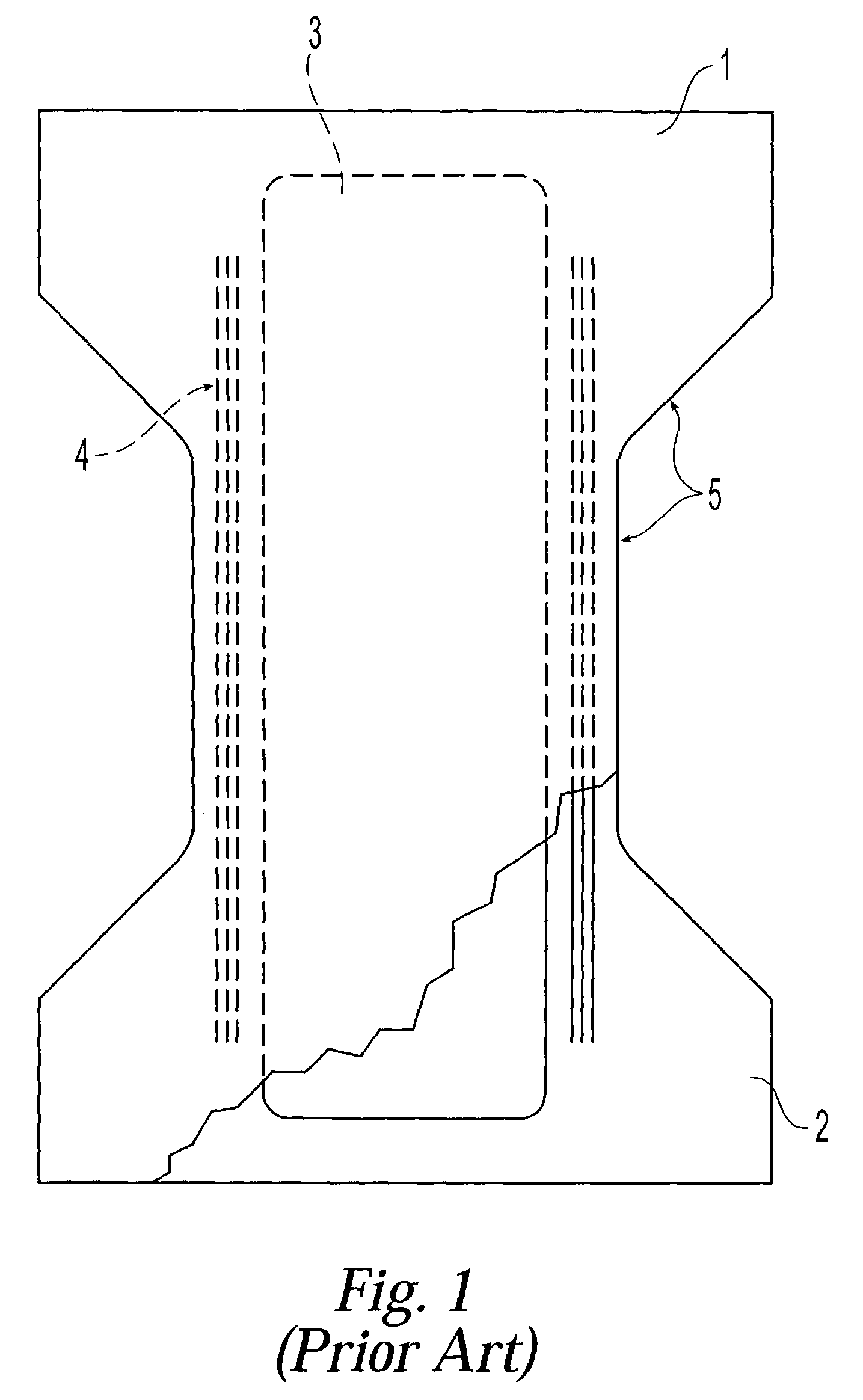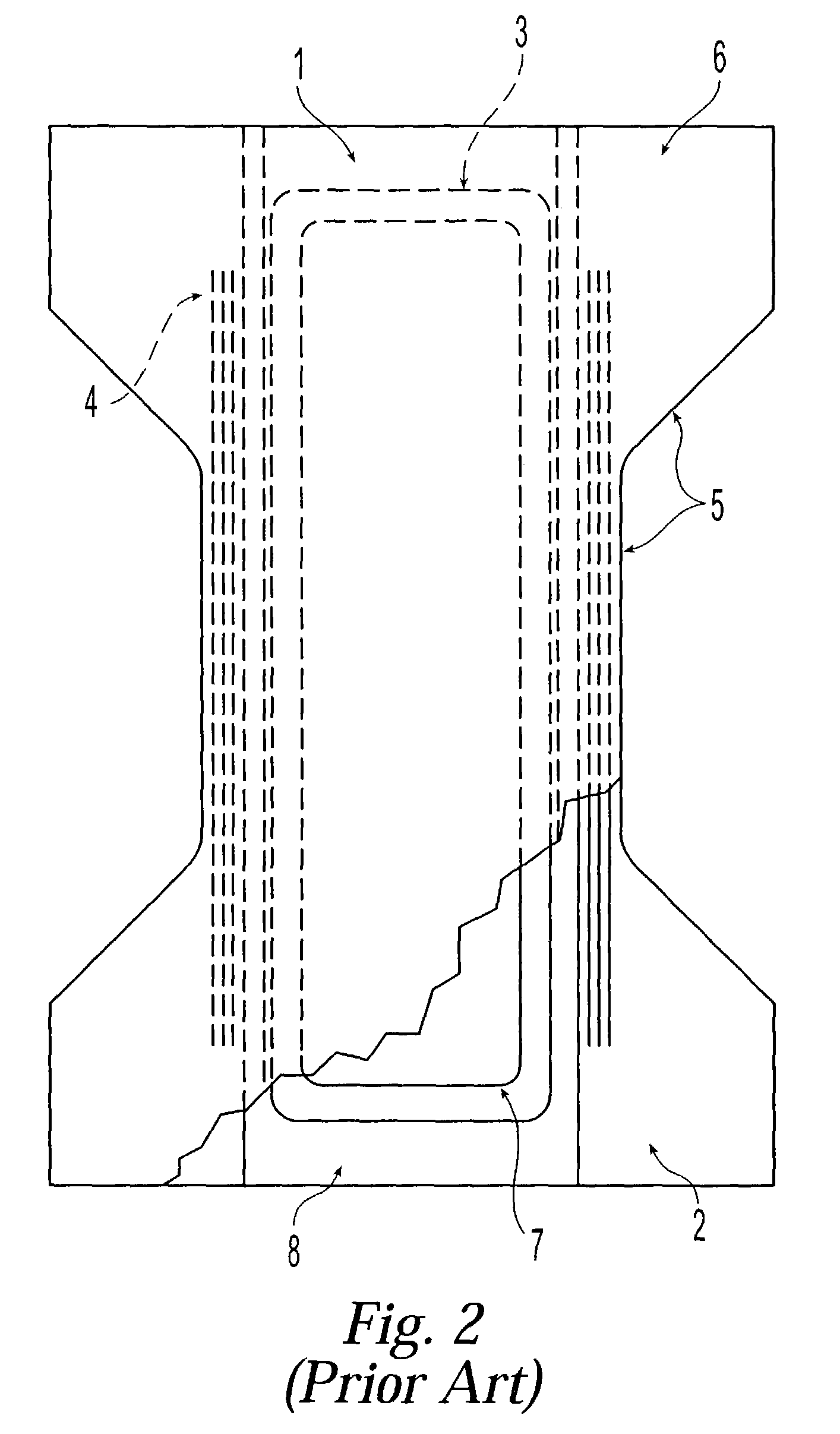Diaper design having zones of reduced stiffness and continuous breathability
a technology of reducing stiffness and breathing, applied in the field of diaper design having zones of reduced stiffness and continuous breathing, can solve the problems of lateral leakage, body exudate leakage, and the limitation of how well elasticated leg openings can fit around the wearer's thighs, so as to prevent lateral leakage, reduce the amount of liquid impervious material, and improve the formation of leg gathers
- Summary
- Abstract
- Description
- Claims
- Application Information
AI Technical Summary
Benefits of technology
Problems solved by technology
Method used
Image
Examples
Embodiment Construction
[0030]In accordance with an embodiment of the present invention, a standard disposable diaper as is well known in the art is disclosed, such as in U.S. Pat. Nos. 5,947,946; 6,102,892, and 6,068,620. Again, it should be noted however, that the present invention is applicable to other types of absorbent articles, but for simplicity the invention will be described as used with a diaper.
[0031]For the purpose of promoting an understanding of the principles of the present invention, reference will now be made to an exemplary, non-limiting embodiment illustrated in FIGS. 3 and 4. As shown, preferably the diaper 10 is of laminate construction comprising (from the skin-facing side outwardly), a topsheet 20, barrier cuffs 21a, 21b, an optional acquisition layer 60, an absorbent core 30, a barrier layer40, and a backsheet 50.
[0032]The diaper 10 is arranged so as to create zones of reduced stiffness and continuous breathability 70 (“breathable zones of reduced stiffness”) surrounding the wearer...
PUM
 Login to View More
Login to View More Abstract
Description
Claims
Application Information
 Login to View More
Login to View More - R&D
- Intellectual Property
- Life Sciences
- Materials
- Tech Scout
- Unparalleled Data Quality
- Higher Quality Content
- 60% Fewer Hallucinations
Browse by: Latest US Patents, China's latest patents, Technical Efficacy Thesaurus, Application Domain, Technology Topic, Popular Technical Reports.
© 2025 PatSnap. All rights reserved.Legal|Privacy policy|Modern Slavery Act Transparency Statement|Sitemap|About US| Contact US: help@patsnap.com



